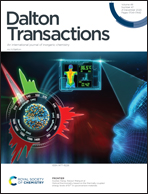Upconversion nanoparticles coated with molecularly imprinted polymers for specific sensing
Abstract
The development of fluorescent sensors based on lanthanide-doped luminescent nanoparticles has increased their application in biomarker detection. Lanthanide-doped upconversion nanoparticles (UCNPs) have been explored as one of the most promising sensors owing to their merits such as excellent photostability, zero background auto-fluorescence, and reduced side effects of near-infrared triggered treatments. However, traditional upconversion luminescence assay based on direct Fluorescence Resonance Energy Transfer (FRET) between the target molecules and surface of UCNPs encounters low detection accuracy due to superficial adsorption interactions. In this work, we use a molecularly imprinting technique to achieve the specific interaction between UCNPs and molecules for accurate sensing. We demonstrate this by synthesizing a nanostructure with a molecularly imprinted polymer at the surface of UCNPs, in which the imprinted cavities can specifically capture the target molecule of rhodamine B. The upconversion signal changes in relation to the molecule concentration due to FRET. Quantitative analysis shows that the fluorescence-quenching rate is consistent with the Stern–Volmer equation, resulting in a limit of detection of 6.27 μg mL−1. Our fluorescence sensing approach integrates the advantages of both nonlinear upconversion and molecular imprinting technologies, showing great potential for the detection of specific molecules.



 Please wait while we load your content...
Please wait while we load your content...